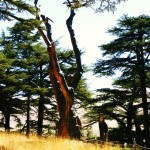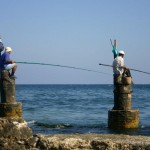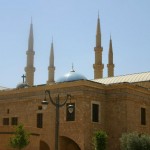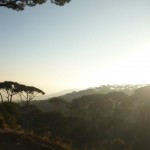 Name:
Name:
Lebanese Republic (al-Jumhuriyah al-Lubnaniyah)
Form of government:
Republic
National holiday:
22 November (Independence Day, 1943)
National symbol:
Cedar
 Capital:
Capital:
Beirut
Official language:
Arabic
Other languages:
English, French and Armenian
International organization participation:
i.a. United Nations and Arab League
 Population:
Population:
5.882.562 (July 2014 est.)
Median age:
29,3 years (2014 est.)
Total fertility rate:
1.74 children born/woman (2014 est.)
Ethnic groups:
Arab 95%, Armenian 4%, other 1%
 Religions:
Religions:
– Muslim 54% (27% Sunni, 27% Shia),
– Christian 40.5% (includes 21% Maronite Catholic, 8% Greek Orthodox, 5% Greek Catholic, 6.5% other Christian),
– Druze 5.6% and
– a very small numbers of Jews, Baha’is, Buddhists, Hindus, and Mormons (2012 est.)
– 18 religious sects recognized
 Area:
Area:
10.400 sq km (10.230 sq km land, 170 sq km water)
Location:
Middle East, bordering the Mediterranean Sea (225 km coastline), between Israel (79 km) and Syria (375 km)
Climate:
Mediterranean; mild to cool, wet winters with hot, dry summers; Lebanon mountains experience heavy winter snows
(Source: The World Factbook)